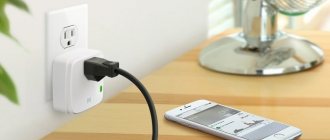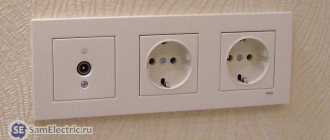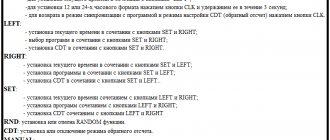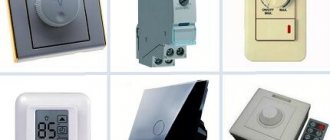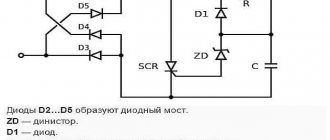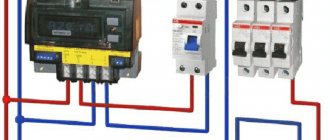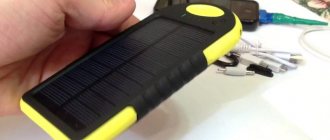Technical devices for monitoring the disconnection of electrical appliances from the mains power supply are increasingly gaining popularity. They are easy to use, help control energy consumption and much more. There are different models of such devices on the market. To make it easier to choose, the best of them are collected in a rating. It is based on user reviews.
What to look for when choosing
Before you start choosing an outlet with a timer, you need to decide whether it is needed at all, and if it is needed, then in what capacity and for what purposes. This is due to the fact that the degree of process automation and, accordingly, the type of timer depend on the purpose. When choosing an outlet with a timer, the main criteria are indicators such as:
- Electrical power - this indicator determines how much power the load can be connected to a specific device model, and, accordingly, how much current can flow through the timer for a long time.
- Degree of protection – determines the possibility of placement in a particular place (indoors or outdoors, in damp or dusty rooms).
- Cyclic operation and settings parameters determine the possibilities of use in automatic mode and the functionality of the device.
- The manufacturer's brand determines the reliability of the device.
Setup instructions
The instructions for the device clearly show how to correctly set up a mechanical timer for an outlet. It all comes down to the following steps:
- set the mode switch to the constant voltage position;
- by rotating the actuator disk, set the real time - a mark with its value opposite the fixed one;
- to configure the connection and disconnection time periods, you need to press or release the buttons corresponding to the desired period;
- insert the plug of the connected device into the timer plug;
- connect to a power outlet;
- move the mode selection button to the “Adjustable” position.
When operating, the device makes a low buzzing sound. The established mode can be performed every day. When editing it, the socket with the timer must be disconnected from the power supply.
For more information about setting up a mechanical socket, see the following videos:
Types of sockets with on and off timers that you can buy
All devices on the market that have a forward or backward time countdown function can be divided into types according to control features and functionality. According to the first parameter, all devices are divided into mechanical and electronic on/off timers according to a given program. Mechanical models are the simplest type of device for turning electricity on/off
Mechanical sockets with timer
Mechanical ones are the simplest and most affordable. In the photo of a socket with a timer you can see the dial and sectors around the entire perimeter. It is adjusted by scrolling the timer to the desired time sector and pressing the button. Typically the time interval is from 15 to 30 minutes.
Pros. Easy to use and low price.
Minuses. They only come with daily settings; you need to set them up yourself every day. The parameters are clearly limited; they can be turned on only with a certain repetition, every 10 minutes, 20, etc.
Electronic socket timer
The second, more complex type is an electrical timer, which has the right to be called a full-fledged programmer. Some models have up to 140 different operating modes. Additionally, an electronic socket timer can have a built-in motion sensor, the operation of which is adjusted for a certain period of time. This is very convenient if you connect a timer to the lighting system to get a source of emergency light.
Electrical outlets have approximately the same set of buttons, making them easy to configure
Electronic sockets are additionally divided into two types in accordance with the maximum time period that can be set to turn on or off:
- Daily allowance . An option that involves maintaining the operation of the device throughout the day or 24 hours, and the set parameters will be repeated day after day. This is not the most convenient mode, since a person's daily routine may change, which will require reprogramming.
- Weekly . The main advantage of this type is the ability to set a certain rhythm of work for each day of the week separately or group them.
For your information! Electronic timers for a 220 V socket operate completely silently, so they do not create inconvenience and are almost invisible.
The DIN rail timer can be either electric or analog.
GSM socket
It is part of the “smart home” system, and therefore it is also called a “smart socket”. In appearance it looks like a simple overlay without any buttons or screen.
There are several control methods: via SIM card, with an application or remote control. In the first case, you will have to insert a SIM card into the gadget and create templates for SMS messages that it will send to you. In the second option, everything is controlled from a smartphone through an application; to connect, it is enough to have access to the network.
It turns out that you can regulate the operation of a programmable device from any distance and from anywhere in the world, all you need is Internet access or a mobile network signal. But this also lies the main drawback: if problems with the connection begin, then it becomes impossible to regulate the actions.
The number of options in such multifunctional devices is amazing, but you will have to pay a lot for all these pleasures.
Timers for DIN rail mounting
Such devices help automate processes on an industrial scale, for example, in enterprises or factories. But if necessary, it can easily be used in everyday life, for example, to organize the switching on of street lighting or to automate the warming up of a car at the right time. Externally, the device is similar to an automatic machine, which has grooves for mounting on a DIN rail. Only it has a display and control buttons. Typically this timer is designed for use in high current networks.
What are timers?
They provide certain signals to various devices at precisely specified times. The nature of household appliances or industrial equipment in the implementation of control is not decisive.
A switch with a shutdown timer can operate for short periods of time or be controlled over a period of days, weeks or months. The technician must ensure proper electrical connections. When programming, you need to set the time when the signal should be given.
Sometimes such time relays have additional useful properties. For example, a timer for a kettle or coffee maker may be located in the same housing as the socket. Thus, the owner can easily immediately set the temporary parameters of the device.
Electronic devices use a display and several keys Source sovet-ingenera.com
Where can it be used?
Electrical Appliance Control
This includes almost any electrical equipment: home appliances, heating, water pumps for irrigation, aquarium equipment, heating and lighting of animal enclosures. Schedule on-off intervals, automate the process, and in some cases even realize significant energy savings.
Turning lights on and off
By setting an outlet with a timer for a certain time interval, you don’t have to worry about turning on the light in the yard at night and then turning it off in the morning. A socket with an electronic timer will do everything for you. It is also not replaceable in case of long-term absence of the owners. Lighting in the house will scare away burglars by creating the appearance of people being present.
Agricultural management
A socket with a mechanical timer is relevant for owners of a summer cottage, vegetable garden, and greenhouses. Automatic watering after a set period of time will free up a lot of your time. You can also set up the supply of water or light for animals if you have a farm.
Criteria for choosing wisely
In almost all products of this type, the load capacity is 16 A with a frequency of 50 Hz for an alternating current of 230 V. But some careless manufacturers, in an effort to save money, use low-quality disconnecting devices. The conductors in them are not designed for high inrush current because they have a small cross-section.
Timer sockets of dubious manufacture should not be used to control one and a half kilowatt water heaters and other high-power consumers.
When choosing an outlet with a timer, you should focus on a number of parameters:
- Maximum programming time or range of time periods.
- The accuracy of the instrument clock and the maximum limit of time error when performing switching operations.
- The discreteness of setting the switching time (the parameter can range from two seconds to half an hour).
- Load capacity of the device (what are the maximum permissible switching currents).
- Maximum number of switching programming per day.
All technical characteristics are specified in the product passport. Please note that the active and reactive load of the equipment connected through the switch should not exceed the values indicated by the manufacturer in the documentation attached to the socket.
Example: when you turn on a 5 kW heater, the current will be approximately 25 A, which will be destructive for a 16-amp outlet.
Each of these outlets is equipped with parameters that provide the required level of protection. There are models on sale that are equipped with a dust- and moisture-repellent body, equipped with protective covers and curtains.
When choosing a model, pay attention to the number and duration of on/off intervals they are designed for
When planning to use switches outdoors, you should choose products with a waterproof case whose IP rating is 44, 54 or 65. Follow the principle - the higher the IP, the better the protection. Thanks to the heat- and moisture-resistant coating of the housings, such devices are able to operate in the temperature range from -10 to +40°C.
When choosing an outlet for a home where there are small, inquisitive household members, it is worth considering the option of purchasing a device equipped with a “child lock” function. Devices of this type are equipped with special valves that prevent direct contact of foreign objects with electrical contacts.
If we focus on manufacturers, the products of leading brands are the most popular on the Russian market: Legrand, ABB, Berker, Wessen, Schneider Electric.
Among the more budget models, it is worth considering the products of the Feron Company and Expert brands, which are in no way inferior in quality to European manufacturers
The price range of automatically switched off sockets is wide. The cost of mechanical models starts at 250 rubles and above. Digital automatic socket-timers will cost from 500 rubles and more.
You can read about smart sockets with remote control and guidelines for choosing them here.
What to look for when choosing an electronic timer
When purchasing, you should decide not only on the type of device, but also pay attention to the main technical characteristics and parameters that affect the operation of the device:
- Programming time frames. Everything is simple here. If you need to control the voltage only throughout the day, a simple mechanical model is selected. If weekly or even monthly management is required, an electronic option with the availability of appropriate options is selected.
- Accuracy. This characteristic is more relevant for mechanical models. Although for most tasks that are assigned to timers, accuracy down to seconds is not important. For optimal performance, it is necessary to choose products from trusted manufacturers.
- Load. Depending on the network load, you must select the appropriate device. There are models that can withstand a load of 7 A, 10 A and 16 A. The choice of indicator will depend on the power consumed by the device powered through this outlet.
- Number of programming lines. This parameter shows how many devices can be shorted to the timer. The simplest samples support only one device, more advanced models have 2 or more lines.
- Dust and moisture protection. Some devices may have additional protection against the negative effects of environmental factors. This is typical for timers intended for outdoor use.
There are samples that have reliable protection from external factors for outdoor use
Recommendations for selection
One of the main difficulties for buyers is choosing an outlet with a timer that meets all requirements, from cost to functionality.
When purchasing, pay attention to the main criteria that you need to pay attention to:
- Manufacturer. The modern market offers products from Camelion, DigiTOP, duwi, Electraline, Elektrostandard, FERON, Orbis, REXANT, Robiton and others.
- Country of Origin. The CIS market sells sockets with a timer made in Russia, China and Spain.
- The operating principle is mechanical and electronic. Sometimes there is an electro-mechanical one.
- Type: weekly or daily.
- Type - for installation in a socket or standard.
- Degree of protection - IP-20 or IP-44.
- Power - up to 1.5-3.6 kW.
- The minimum time setting is 0.5; 1.0; 1.5 and 30 min.
- Number of programs per day - 8, 48, 96.
Also consider a number of useful tips:
- Decide why you need such a device. If you want to solve simple problems, for example, turning on the heating, an inexpensive mechanical option is suitable.
- Buy the selected model only from trusted retail outlets. If necessary, do not hesitate to ask the seller questions about features and characteristics.
- If you need precision when it comes to switching on and off, choose sockets with an electronic timer. In this case, you can make more precise adjustments and be sure of a minimal time error.
- When purchasing, keep in mind that most models can turn on and off no more than five to seven times a day.
- Try not to skimp on your purchase. If we are talking about performing serious tasks, it is better to give preference to European brands. If in doubt, you should consult with a specialist in the store.
- If you often abandon your apartment or house, the option of randomly turning on and off the lights will protect your home from theft. In this case, it is desirable that the selected model supports control of two devices at once.
When choosing, try to pay attention to all the criteria and take into account the advice in the article. If there is such an opportunity, it is better not to save money and buy an outlet with good characteristics.
How to set a timer to turn electrical appliances on and off
Regardless of the brand and design of the timer and the location of its installation, the settings of devices of the same type are performed in the same way, namely:
- Setting up mechanical devices. Sockets with a mechanical timer are equipped with a rotating drum, on which there are markings that determine the cycle of switching on and the time interval. For models intended for installation on a DIN rail, the setting is performed using rotary controls, through which each parameter is set separately.
- Tincture of electronic devices. To set the operating modes of this type of timers, use the buttons located on the device body: TIMER and WEEK, DAY and ON, OFF and AUTO, as well as CLOCK, MINUTE and HOUR. The process of setting up a specific model is reflected in the operating instructions included in the package.
Electronic models are configured using buttons located on their body
How different types of timers work and how they work
The principle of operation of a socket with a timer, regardless of its design, is based on switching contacts located in the device body under the influence of a time relay. In mechanical models, the basis of the contact group is a lever mechanism, while in electronic analogues there is an electronic programming and control system, which includes buttons (sensors) and an electronic display. Model "SBE-STM-1"
SBE STM 1
Mechanical
The name daily determines the possible period of use of such a device, limited to 24 hours - a day. The response time on mechanical timer sockets is set using a special drum, on which a scale is printed, divided into hours and minutes during the mode of use. The intervals for turning on and off the connected load are set by the manufacturer and cannot be changed independently.
So, when set to 20 minutes, the outlet will turn off after this period of use and turn on again after a similar period of time. The number of cycles during the day may vary, depending on the technical characteristics of a particular model. Model "Feron TM22/61925"
Feron TM22 61925
Electronic
An electronic on/off timer according to a given program is a more functional device, which is achieved by the possibilities of available settings. Operating modes can be set both at different time intervals during the day, and at longer periods of use. Such devices can be configured for the entire calendar week, and for some models - for a month or more.
DIN rail mounted
A distinctive feature of this type of timers is that they are installed in an electrical cabinet (panel), and a specific group of the electrical network is connected to them. The principle of operation and settings for timers of this type are the same as for those installed in a socket, and a standard DIN rail is used for mounting in an electrical cabinet. Model “TCD-2” for installation on a DIN rail Timers installed on a DIN rail come with mechanical and electronic control types and are used in single- and three-phase electrical networks, which is provided for by the specific model of the device.
Socket timer
How to set up an electronic socket timer
There are many varieties and models of electronic socket timers. But in general, the principle of setting them up is similar. Almost all of them are equipped with a liquid crystal display that displays settings and current menu items. Below it there is a row of buttons for controlling and setting the time.
Usually the set of buttons on different timers is the same
Their set is usually the same on different models. Here is a list of commonly encountered controls:
- master clear . The instructions for timers usually begin initializing the device. It is a button for resetting all settings from memory, including resetting the current time. By the way, the button may simply be called reset or “reset”;
- random or rnd . Setting or resetting the random start mode;
- clk or clock. The button is responsible for several functions. Setting the time with the hour, min, week buttons. Together with the timer button, it converts time formats;
- timer. Actually, setting a timer. Used in conjunction with the week, hour, min buttons;
- rst/rcl. Disabling and enabling programs;
- week/hour/minute . Setting the time for a week, an hour a minute.
In general, installing and configuring an electronic on/off timer according to a given program is no more difficult than on a simple electronic wristwatch. Buttons may have different names depending on the manufacturer or may even be localized into Russian.
Features of setting the electronic TE-15 IEK timer in accordance with the instructions for use
One of the most popular models on the market is the TE-15 digital timer, which is produced by several manufacturers. Its configuration scheme is as follows:
- After turning on, the first thing you need to do is press the reset button and wait until the built-in memory is completely cleared.
- Next, you need to set the current time and day of the week. The first indicator can look like “24” and “12”. The days of the week are named after the first letters of Latin words. The desired parameter is set using the “D+”, “H+” and “M+” buttons.
- The timer has 4 operating modes, which can be selected by pressing a similar key.
- To start programming, you need to press the “P” button and sequentially set the days of the week and the start time. The end of the program cycle will be pressing the “P” key again.
- The next step is to set the days of the week and the shutdown time; confirmation of the action is completed by pressing the “H+” button.
Classification of timer sockets
In fact, switchable sockets cannot be considered as such in the usual sense. Unlike stationary built-in blocks or overhead points, they more closely resemble a block adapter. The device combines both an outlet and a timer.
The housing of such a switch has an output power socket for connecting an electrical appliance plug, as well as a plug connector required for power supply from a stationary point.
There are two pins on the body of the devices, similar to those found in an electrical plug. Power supply to the output contacts in such devices is not constantly supplied.
Programmable switching points operating on the relay principle are designed to provide connection to both household appliances and professional equipment at 220 V
The main criterion for classifying devices is the range of regulation and the type of wire used. Depending on the method of setting the interval, switched sockets are divided into two types: mechanical and digital. Each type has its own significant advantages and inherent disadvantages.
#1: Traditional Mechanical Devices
Models produced half a century ago worked due to the movement of a mechanism consisting of gears. They were driven by a coil spring. Mechanical watches work on the same principle.
Modern models are equipped with a pulsed low-speed electric motor.
Thanks to the pulsed low-speed electric motor, modern models are less noisy, but more dependent on an external source of electricity
The operation of the devices is based on a traditional mechanical scheme for organizing the management and control of the operation of an electrical point. It ensures uninterrupted rotational movement of the disk, under the influence of which contacts are closed and opened.
The input of program data for the operation of the equipment is specified using separate segment-keys of the time scale installed on the case. Each of the keys is responsible for the interval entrusted to it of 15 or 30 minutes.
During the day, the timer can be turned on at least every quarter of an hour. The number of cycles is limited by the discreteness of the time setting; on average, it can reach 96 times per day.
The task of the timer is to organize the supply of electricity to the device when one of the segments is pressed. There are samples on sale in which the switch buttons need to be “recessed” to turn off the device, and there are also those where the keys need to be raised.
Most mechanical models are equipped with a circular time scale, along the outer contour of which there is a row of switch buttons
Using a position switch, the device can be switched from programmable mode to normal mode. It is usually installed on the side and equipped with a light indication device.
The control principle of mechanical category timer sockets determined their key drawback. They cannot be programmed for more than 24 hours. This is due to the fact that the rotation speed of the disk equipped with a contact directly depends on the gear ratio, which reduces the number of revolutions of the pulse motor shaft in one minute.
Theoretically, there are ways to force the actuator disk to complete a revolution not in a day, but in 48 hours. For example: to do this, increase the number of gears, thereby complicating the gearbox, or increase the diameter of the disk itself. But such modernization affects the bulkiness of the device, and therefore is practically not used in practice.
Another significant disadvantage of mechanical sockets equipped with a timer is the dependence of their actuator disk on the normal operation of an external power source.
If the frequency of the alternating current for any reason differs from the nominal value of 50 Hz, then the mechanism begins to “run ahead” or, conversely, “lag behind”
Although the dependence of the mechanical device on the mains voltage can be considered as a plus. Even in the event of an emergency power outage, the mechanism will still execute the specified program, it will only implement the task a little later.
How to make a time relay for a regular outlet yourself is described in detail in one of the popular articles on our website.
#2: Electronic Digital Models
Electronic models have a wider programming range. The number of variations can reach more than a hundred.
Electronic devices operate using relay circuits, which are controlled by a built-in programmable microcontroller
Programming the operation of the device is carried out by pressing keys on the block, the number of which can be from six to ten. The status of the device and its operating mode are monitored through the display.
The executive motor in electronic models is not dependent on an external power source for the reason that it is equipped with a battery, which acts as a backup analogue. The battery is capable of providing autonomous operation of the device for 100 hours or more.
In the future, to recharge such a battery, you only need to connect the device to the mains for 12-14 hours without load.
In a situation of emergency power outage due to the inclusion of the battery, the switch does not notice the difference, in any case closing the contact within the set period
Unlike mechanical samples, in which the switching interval is limited by parameters of 15 and 30 minutes, in electronic devices the switching on can be programmed with an accuracy of two seconds.
Main functions of the softkeys:
- “Timer” - for entering and confirming data during 12 and 24 hour operation of the device;
- “Hour, minute” - setting the time in combination with the “Timer” key;
- “Week” - selection and setting for the week;
- “Rst/Rcl” - cancels and restores the program;
- “On/auto/off” —select manual or automatic operating mode.
Most models have the “Random” function. The floating advance timer function allows you to turn on the socket load from two minutes to half an hour in any order, thereby simulating the presence of a person in the room.
The switching on of electrical appliances connected through the device is not tied to a specific time, which can confuse “observers” who are trying to find out whether there are people in the house.
There are also models on the market that support installation, as well as memorization of off/on modes for individual days of the week. For example, model .
Advantages and disadvantages of such devices
The use of such devices simplifies the operation of various electrical equipment and household appliances, so the advantages of an outlet with a timer include the following indicators:
- is it possible to automate the process of turning on and off loads for various purposes? This is especially true for electronic devices;
- with correct settings, you can achieve a reduction in electrical energy consumption;
- The consumer sets the operating mode of the connected load elements independently in accordance with his schedule and rhythm of life;
When calculating for the consumed electrical energy in a two-tariff mode of use, the reduction in costs for paying bills, in the case of using sockets with a timer, can be reduced by 20-30%.
- in models with a built-in battery, the settings are saved even when the centralized power supply is turned off, which allows the connected devices to continue operating in the same cycle after voltage is supplied to the electrical network;
- the ability to create a simulation of the presence of people in an empty apartment (country house) will make it possible to secure it from illegal entry by unauthorized persons;
- The operating mode can be configured for a long service life.
Models equipped with an electronic timer have the main disadvantage that when the centralized power supply is turned off, the timer operation process does not stop, but works “by itself.” This may be undesirable when connecting heating appliances to such devices or turning on household appliances during a given use cycle (night time, etc.).
Model "TG-14A"
Devices with a mechanical control type have several more disadvantages, these include:
- inaccuracy of work in relation to the hourly cycle;
- the device “ticks” during operation, which can interfere, especially at night;
- programming mode is limited and lasts up to 24 hours;
- wear and tear of the timer mechanism leads to limited service life for such devices.
We create a time relay for 12 and 220 volts
Transistor and microcircuit timers operate at a voltage of 12 volts. For use with 220 volt loads, diode devices with a magnetic starter are installed.
If you plan to install a time relay on low-power equipment, do not install a magnetic starter. The diode bridge and thyristor convert the voltage without it.
To assemble a controller with a 220 volt output, stock up on:
- three resistances;
- four diodes (current more than 1 A and reverse voltage 400 V);
- capacitor with an indicator of 0.47 mF;
- thyristor;
- start button.
After pressing the button, the network closes and the capacitor begins to charge. The thyristor, which was open during charging, closes after charging the capacitor. As a result, the current supply stops and the equipment turns off. The correction is carried out by choosing the resistance R3 and the power of the capacitor.
Manufacturing with diodes
To install a diode system, the necessary elements are:
- 3 resistors;
- 2 diodes rated for current 1 A;
- thyristor VT 151;
- starting device.
The switch and one contact of the diode bridge are connected to a 220 volt power supply. The second wire of the bridge is connected to the switch. The thyristor is connected to resistances of 200 and 1,500 Ohms and a diode. The second terminals of the diode and the 200th resistor are connected to the capacitor. A 4300 Ohm resistance is connected in parallel with the capacitor.
Using transistors
To assemble a circuit using transistors, you need to stock up on:
- capacitor;
- 2 transistors;
- three resistors (nominal 100 kOhm K1 and 2 models R2, R3);
- button.
After turning on the button, the capacitor is charged through resistors r2 and r3 and the emitter of the transistor. At the same time, the voltage across the resistance drops as the transistor opens. After the second transistor opens, the relay is activated.
As the capacitance is charged, the current drops, and with it the voltage across the resistance to the point at which the transistor closes and the relay is released. For a new start, the capacity must be completely discharged; this is done by pressing a button.
Chip-based creation
To create a system based on microcircuits you will need:
- 3 resistors;
- diode;
- TL431 chip;
- button;
- containers.
The relay contact is connected in parallel to the button to which the “+” of the power source is connected. The second relay contact is connected to a 100 Ohm resistor. The resistor is also connected to resistances.
The second and third pins of the microcircuit are connected to a 510 Ohm resistor and a diode, respectively. The last contact of the relay is also connected to the semiconductor, with the execution device. “–” of the power supply is connected to a 510 Ohm resistance.
Using ne555 timer
The simplest circuit to implement is the NE555 integrated timer, so this option is used in many electrical circuits. To install the time controller you will need:
- board 35x65;
- Sprint Layout program file;
- resistor;
- screw terminal blocks;
- spot soldering iron;
- transistor;
- diode.
The circuit is mounted on the board, the resistor is located on its surface or brought out by wires. The board has space for screw terminal blocks. After soldering the components, excess solder is removed and the contacts are checked. To protect the transistor, a diode is mounted in parallel with the relay. The device sets the response time. If you connect a relay to the output, you can adjust the load.
Operating principle of the system:
- the user presses a button;
- the circuit closes and voltage appears;
- The light comes on and the time countdown begins;
- After the set period has expired, the light goes out and the voltage becomes 0.
The user can adjust the operating interval of the clock mechanism within 0 - 4 minutes, with a capacitor - 10 minutes. The transistors used in the circuit are bipolar devices of low and medium power of the npn type. The delay depends on the resistances and capacitor.
Multifunction devices
Multifunctional time controllers perform:
- counting down time in two versions simultaneously during one period;
- parallel counting of time periods continuously;
- countdown;
- stopwatch function;
- 2 autostart options (the first option after pressing the start button, the second – after applying current and expiration of the set period).
To operate the device, a memory block is installed in it, in which settings and subsequent changes are saved.
TOP 8 popular models of sockets with a timer
Theben Timer 26
The simplest but most reliable model from the German manufacturer Theben.
It is characterized by high reliability and durability. When completing the on-off cycle, it notifies you with a characteristic click. Unlike Chinese analogues, it works completely silently when the timer is set. There is no light indication, but given its other advantages, this is not critical. Maximum load - 16A. The company has proven itself to be the best and produces high-quality equipment of European quality. Naturally, the price for this rather simple model is not the lowest and is about 1800 rubles.
Where can I buy
Look at the selection of sockets on TMall Aliexpress - here is the largest selection, 3479 products are presented. In addition to Aliexpress, pay attention to these 9 models:
- Elari Smart Socket for RUB 1,990.
- Redmond RSP-R2S for RUB 1,080.
- Hiper IoT P03 for RUB 1,390.
- Hiper IoT P04 for 1490 rub.
- Digma DiPlug 300 for RUB 1,390. (currently 20% discount).
- Rubetek RE-3301 for 3,190 rubles.
- Rubetek RE-3310 for 3,590 rubles. (this is not a regular outlet, but a surge protector).
- Hommyn PL-20-W for RUB 2,990.
- Aqara for RUB 2,190.

